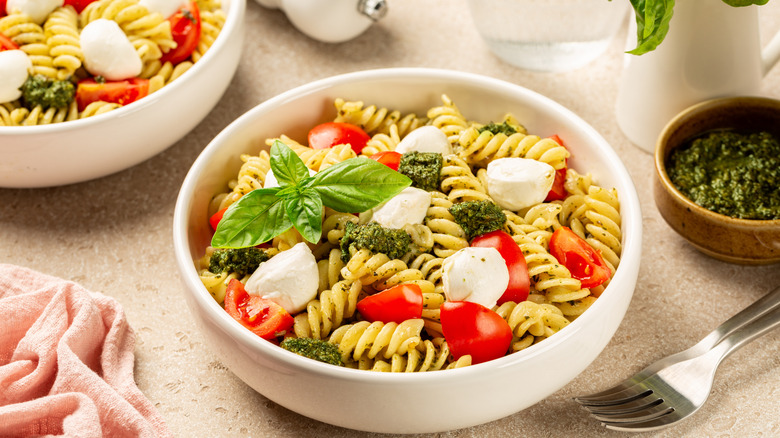
Jc Olivera/Getty Images
Giada De Laurentiis is known for her elevated and authentic Italian cooking. Throughout her career, she’s become a trusted source for family-friendly dinners and reimagined pasta dishes. Her recipes typically serve about six people, which is great for feeding crowds. But if you have a smaller household, it can lead to a lot of leftovers. The good news is that De Laurentiis swears by day-old pasta. In fact, she believes that it might even be better for you.
The celebrity chef explained her reasoning in a video on Instagram. “So when the pasta cools, the carbs turn into resistant starch, which is easier to digest. This means you have a lower blood sugar spike and it’s better for your gut,” said Laurentiis. While Laurentiis herself isn’t a doctor — nor is she known to be an enthusiast of popular health foods — her statements about cold pasta do have some merit within the medical community.
According to University Hospitals, a leading academic medical center and hospital network, the starch molecules in simple carbohydrates like pasta compress after they’ve been cooked and cooled down. This is an idea also supported by Harvard Health, which backs up Laurentiis’ claim that the change in temperature allows the simple starches to be converted into resistant starches. But, while it may be better for blood sugar, the pasta won’t necessarily be easier to digest.
How the body digests chilled pasta

Olga Mazyarkina/Getty Images
The simple starches of fresh pasta are easily broken down by the body, while the resistant scratches of leftover pasta take a bit more energy for your body to convert. Much like fiber, resistant starches make it all the way to the large intestine, where they provide food for the good bacteria in your gut. This is beneficial for the microbiome, and the slower digestion associated with it is what can help you feel fuller for longer. It’s also why chilled pasta may also be better for regulating blood sugar, as Giada De Laurentiis suggested. Resistant starches release glucose much more slowly than simple carbs, decelerating the absorption of glucose into the bloodstream and preventing sugar spikes.
So, while it might feel like leftover pasta is easier to digest, the truth is that a lot more of your body’s time and energy goes into digesting resistant starches than simple starches. However, that time and energy is also conducive to all of the benefits that come along with eating them. There’s no harm in testing the theory out for yourself. See how it goes with one of De Laurentiis’ recipes or whip up one of Tasting Table’s cold pasta salad recipes. Just note it can take up to 24 hours of chilling before the starch converts. While you’re testing that theory, you can also experiment with the best ways to reheat pasta, as the structure of the resistant starch molecules won’t change.


Dining and Cooking